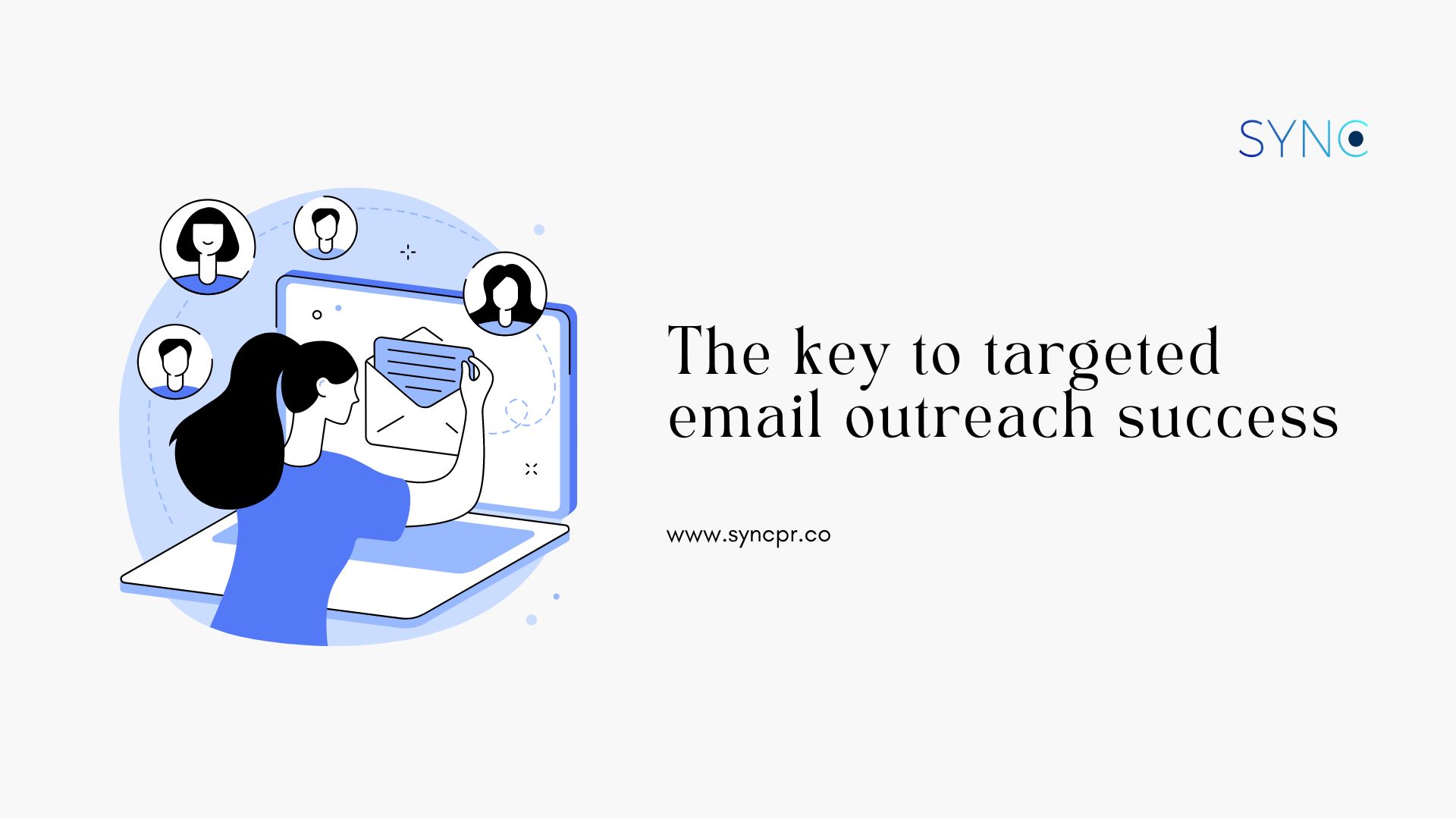In the ever-evolving landscape of digital marketing, email outreach remains a cornerstone strategy for businesses seeking to connect with their target audience effectively. However, achieving success in email outreach requires more than just crafting compelling messages and hitting send. It demands a strategic approach that encompasses understanding the audience, maintaining clean data, timing outreach efforts appropriately, leveraging automation thoughtfully, creating engaging content, and measuring performance for continuous improvement. This comprehensive guide will delve into the key components of targeted email outreach success, providing actionable insights and best practices to help marketers optimize their campaigns and achieve their goals. From audience segmentation to performance optimization, each section will explore essential strategies and tactics to enhance the effectiveness of email outreach initiatives. Let’s dive in and unlock the secrets to successful email outreach in today’s competitive digital landscape.
Understanding your audience for email outreach

Before embarking on any email outreach campaign, it’s essential to understand your audience thoroughly. Let’s compare it to planning a surprise party for your best friend – you wouldn’t invite strangers or send invitations to the wrong address, right? The same principle applies to email outreach!
READ MORE: Here is your guide to building an effective influencer marketing campaign
For instance, if you’re selling eco-friendly skincare products, your audience may consist of people who are passionate about environmental sustainability. Understanding this allows you to customize your emails to showcase the eco-friendly aspects of your products and how they resonate with your audience’s values.
Segmentation is akin to organizing your closet – you wouldn’t mix your socks with your shirts, would you? Segmenting your audience involves categorizing them based on factors like demographics, interests, and behaviour. For example, you might have one group of customers interested in anti-ageing solutions and another in acne treatment. By segmenting your audience, you can send targeted emails that address their specific needs and preferences.
But what if you aim to broaden your reach and engage with new audiences? This is where research becomes crucial. Let’s say you uncover a rising interest among young adults in natural skincare remedies. Through thorough research, you can identify this emerging target audience and adjust your email outreach strategies to connect with them on platforms like TikTok or Instagram, where they’re most active.
Data management and cleanup
Your email list is similar to a garden. Regular maintenance is necessary to prevent weeds from taking over and flowers from wilting. Therefore, it’s important to keep your data organized for successful email outreach.
Let’s start by discussing the significance of regularly updating contact information. Imagine sending an email to someone, only to realize their email address has changed. Keeping contact information current ensures your emails reach the intended recipients.
Next, let’s address inactive or irrelevant contacts. Just as you wouldn’t keep expired groceries in your fridge, inactive contacts shouldn’t linger in your CRM system. They clutter your database and diminish deliverability and engagement rates. Sending emails to unengaged contacts feels like talking to a brick wall.
To combat this, it’s vital to periodically clean up your database by removing inactive or irrelevant contacts. You may need to confirm interest with some contacts or simply remove them from your list entirely. This practice enhances the effectiveness of your email outreach and ensures messages reach the right audience for meaningful engagement.
Timing and cadence

Timing is crucial when it comes to sending emails! Just like you wouldn’t plan a party when everyone’s away, you need to choose the best times to reach your audience with your emails. As a certified email marketing specialist, you understand the importance of syncing your email activity with the business cycles of your industry. Each industry has its own rhythm – some are busiest during certain seasons, while others have slower periods. By understanding these cycles, you can schedule your outreach efforts for maximum impact.
For instance, if you’re reaching out to retailers, it’s wise to avoid sending emails during the busy holiday season when they’re overwhelmed with customers. But it’s not only about avoiding busy times – you also need to consider periods of low responsiveness, like holidays or vacation seasons. Imagine sending a big email campaign on Christmas Day – chances are, your recipients won’t even see it until they’re back at work in the new year! Lastly, let’s discuss aligning your outreach efforts with the fiscal year of your target clients. Many companies follow a fiscal calendar that is different from the regular calendar year.
By understanding when your clients are planning their budgets and making purchasing decisions, you can time your outreach efforts to coincide with these critical moments. This ensures that your emails are reaching their inboxes at the most advantageous times, increasing the chances of engagement and response.
Strategic automation
Imagine this scenario: you have a thousand emails to send but only two hands to do it. That’s where automation tools come into play to make your life easier!
Automated campaign technologies are your reliable assistant, allowing you to connect with a broader audience effortlessly. With these tools, you can set up emails to be sent at specific times, tailor messages based on individual recipient details, and monitor engagement metrics seamlessly.
However, here’s the thing to remember: while automation can streamline your email efforts, it can’t replace personalized communication. Think of it as a chef using a food processor – it’s quick, but handmade ingredients always taste better.
That’s why it’s essential to strike a balance between quantity and quality in your automated emails. Sure, you could send out a hundred generic messages in no time, but what’s the use if no one reads them? Instead, focus on creating meaningful, personalized emails that resonate with your audience. It might take a bit longer, but the outcomes will be worth it.
Keep in mind that automation is a tool, not a magic fix. Use it wisely, and it can enhance the effectiveness of your email campaigns.
Compelling content creation
Opening an email and finding valuable information is powerful.
Tailored content acts like a magnet, drawing recipients in and keeping them engaged throughout. Whether it’s a helpful blog post, an insightful industry report, or a captivating video, content that speaks directly to your audience’s needs and interests is crucial.
However, not all content fits everyone. Just as you wouldn’t wear the same outfit to a job interview and a beach party, you shouldn’t send the same content to every recipient. Instead, customize your content to different buyer personas and stages of the customer journey. For instance, someone in the awareness stage might benefit from a comprehensive guide, while someone in the decision stage might prefer a case study showcasing your product’s success.
Variety is also vital in content creation. Use a mix of blog posts, infographics, videos, and more to keep your audience engaged and returning for more.
Ultimately, success lies in delivering valuable, relevant content that resonates with your audience. By investing time and effort into creating compelling content, you can enhance your email outreach campaigns significantly.
Performance measurement and optimization

Driving a car without a dashboard means you can’t tell how fast you’re going, how much gas you have left, or if there are any problems. Monitoring and evaluating your email outreach campaigns is like having a dashboard for your marketing—it gives you important information to guide your efforts.
First, you need to set up key performance metrics. These include open rates, click-through rates, and how engaged your audience is. For instance, a high open rate means people are interested in your emails, while a low click-through rate might mean your content needs work.
Using tools to track and analyze these metrics is crucial. Platforms like Mailchimp, HubSpot, or Sendinblue have features for monitoring campaign performance in real-time and finding areas to improve.
But here’s the important part: it’s not just about gathering data—it’s about using it to make your campaigns better. Analyzing campaign performance shows you what’s effective and what’s not so you can adjust your strategy for better results.
For instance, if certain subject lines consistently get good results, you can use similar ones in future emails. Likewise, if your audience responds well to a particular type of content, you can create more of it to keep them engaged.
By regularly measuring and refining your email outreach campaigns, you can stay on track for success.
In conclusion, effective email outreach requires careful planning, strategic execution, and ongoing evaluation. By following the actionable insights and best practices outlined in this guide, businesses can significantly enhance the success of their email outreach campaigns. From segmenting the audience and cleaning up data to timing outreach efforts strategically and measuring performance diligently, each step plays a crucial role in optimizing outreach initiatives. By leveraging the strategies outlined in this guide, marketers can position themselves for success in today’s competitive environment and achieve their outreach objectives with confidence.

